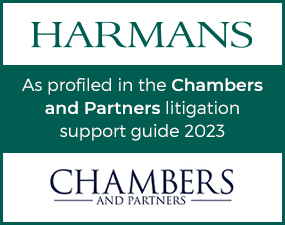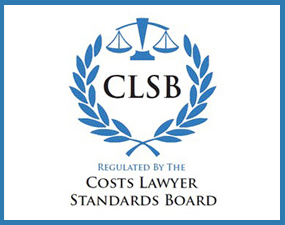“Fat cat” myth undermines all the good work done slams Gary Knight
I am disappointed to notice politicians and sections of the media back on the Solicitor bashing bandwagon all in the name of reducing costs.
It has been a few years since this level of critique but the same old, tired headlines are being trotted out with references to “fat cat” solicitors getting the cream that is the tax payers money; headlines scream, “Solicitors being paid £800-£1,000 per hour” without any context provided.
Disappointingly some members of the public will buy in to some of the headlines; papers would not print if it was not correct, right?! The result is the hard working, diligent and professional solicitor is being regarded as no more than a money grabbing parasite growing rich on the misery of others.
What is perhaps more surprising is the muted response from a profession that has more cross checks and regulations than any other – that bends over backwards to be transparent and open and has in place a system of checks and balances whereby their fees can be challenged and scrutinised.
The reality is that very few solicitors were paid £800-£1,000 per hour. Take as an example, a complex, high value and fully contested clinical negligence matter wherein the employment of a London Grade A fee earner is justified, on an assessment a base rate of £400- £450 may well be allowed but only once the Costs Judge is satisfied that (i) it was reasonable and proportionate and indeed necessary for the seriously injured party to instruct a solicitor in London and (ii) that work undertaken was sufficiently complex, high value, important, novel etc so as to justify the involvement of a Grade A fee earner (inevitably much of the work will be allowed at a lower grade fee earner’s rate to reflect delegation).
In such a case the starting point may be, lets say, £400 per hour, the Costs Judge then needs to be persuaded that the risk assessment undertaken at the outset – usually absent any supportive evidence and often without sight of any medical records – justifies an assessment of prospects of the case winning with the client recovering damages at no better than 50/50.
To recover 100% is difficult particularly if the matter did not proceed to trial however if the Claimant recovers 100% then the overall rate will be in the region of £800.00 based on the above assumptions; however as stated, the rate will not apply to all work undertaken as the court expects delegation.
Therefore the headline grabbing £800 per hour fails to reflect the reality of litigation, and lets not forget that if the rates and uplift are justified it usually means that the Defendant fought the matter to trial or close thereto and lost.
It is the “fat cat” myth that undermines all the good work undertaken by Solicitors; it is a myth that the Government wants to hold up as reality.
Suggestions that Solicitors should provide services pro-bono are mooted (many already do) – what other professions are treated in such a manner?
Greedy lawyers, we are told, are to blame not the negligent treatment provided by the hospitals, doctors and other professional care experts with whom we place our trust and the best way to reduce costs is to have solicitors act free of charge or under a fixed fee.
Surely eradicating the errors that have life changing consequences for the patients would save damages and remove any need for claims?
And why is there no reference to the fact that the success fees and/or ATE premiums are no longer recoverable where claims issued are after April 2013?
Can it not now be argued that a significant element of costs claimed related to the ATE insurance premiums necessary to protect the injured party against adverse costs and own disbursements and that these fees are no longer recoverable?
I have spent 32 years dealing with costs acting for both Claimant and Defendant; a veteran of the so called “Costs Wars,” it was always clear why war broke out in the first place.
The Government of the day wanted to save costs (sounds familiar) and whilst the NHS was targeted, the abolition of the same would have sparked outrage so a much softer target was dear old “Legal Aid” – “fat cat” lawyers were highlighted as raking in £thousands of hard earned tax payers money and guess what, terrorists were being given legal aid so screamed tabloid headlines; those rascal foreign types were using legal aid for bogus claims shouted other newspapers, there was no one holding the reins and drastic changes were necessary and so it came to pass that legal aid would be cut to the bone.
But how could ordinary people find access to justice? Conditional Fee Agreements and After the Event Insurance was the answer, apparently; but when the legal profession pointed out that the new regulations, which envisaged the additional liabilities being taken from the client’s damages capped at a percentage of said damages, were unworkable in a system where unlike say the United States, damages were often modest the strangest decision of perhaps all time was taken and almost overnight with little if any consultation, additional liabilities were made recoverable from the losing opponent.
Defendants understandably reacted with horror, the decision potentially doubling solicitors base costs with tens of thousands added to claims by the ATE premiums.
Defendants, again understandably, took every issue imaginable (and a few unimaginable) to avoid paying the additional costs and indeed any costs thus the first shots were fired in the war of costs.
Many years of lobbying Insurers and Defendant organisations such as the NHSLA, MDU, MPS etc succeeded in overturning the recovery of additional liabilities in all but a few areas and as a result costs will start to come down significantly; we now have budgets in place (far from ideal but further case management to reduce costs) and there is a new interpretation of the “indemnity principle” where not even the necessity of the work undertaken guarantees its recovery against the opponent and Judges are invited to stand back at the end of a contested assessment and consider if the allowed figure appears proportionate and if not to reduce further!
Defendants have never had it so good however the stick used to beat the Claimant’s costs will not be put away and will now be used to drum up support for fixed fees.
Given the biggest cause of the problems – additional liabilities – has been removed save for pre April 2013 issued cases, surely it is a time to consider the impacts of the new regulations, which must be said are Defendant friendly, and see how the level of costs reduces before reaching for the one size fits all option which can only result in the dilution of the quality of legal representation available to the victims of clinical negligence.
Another way to save costs (other than cutting out the mistakes in the first place) is to admit liability early; makes sensible offers early; do not fight cases and for that matter costs claims to the door of the court.
Much is made of the “savings” achieved in respect of costs by Defendants suggesting this to be evidence of “excessive claims”.
The claims are put forward reflecting the best case for a Claimant; items dealing with non-recoverable work – funding, solicitor own client discussions not progressing the claim etc- are stripped out of the claim but the resultant figure is then the subject of an item by item challenge with each disputed item to be resolved in the favour of the paying party where there is any doubt as to the reasonableness and necessity of the item in dispute. Decisions can vary from costs judge to costs judge, from district judge to district judge.
Receiving Parties are prepared to reduce claims to avoid the cost of assessment; this is both a sensible and commercial view. If the “bottom line” can not be achieved the matter proceeds to assessment, often more is recovered though on occasions the bill is reduced to below an offer and the Paying Party recovers costs – it is no different to say dealing with damages; simply because the Claimant recovers damages at a sum less than sought does not render the claim unreasonable, it does not suggest that the claim was exaggerated; the same applies to costs.
Solicitors on both sides of the table do not need a Costs Lawyer to state just how hard they work for their clients; the unsocial hours, the extremely long days and the time spent whilst on family holidays perusing lengthy documents on their mobile screens. However it must be time for the profession to highlight the undoubted good done rather than to allow there to be a focus on ill researched and lazily reported articles that serve only to undermine a profession which I can only admire from the periphery and usually at the end of a case where the file shows the time, effort and heart and soul poured in to the case for a severely injured client with whom the Solicitor has built up a bond over the many years of conducting the case – the effort transcends, as is oft wrongly reported, a desire to accumulate chargeable time; the effort is that of a professional doing all he or she can do in a fight to protect a vulnerable client.



